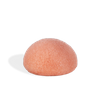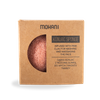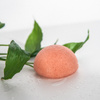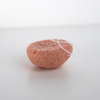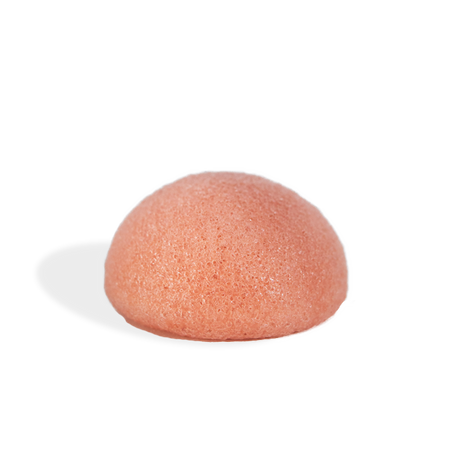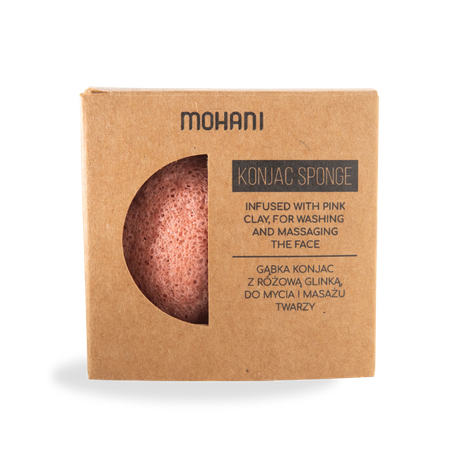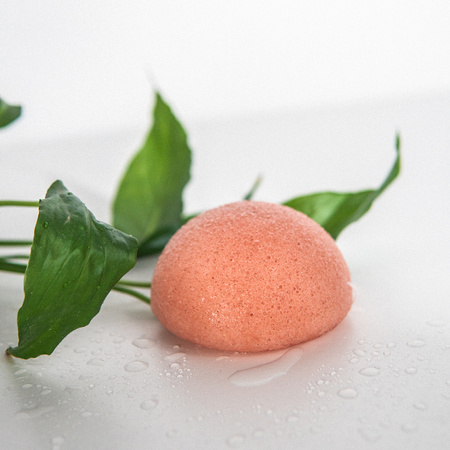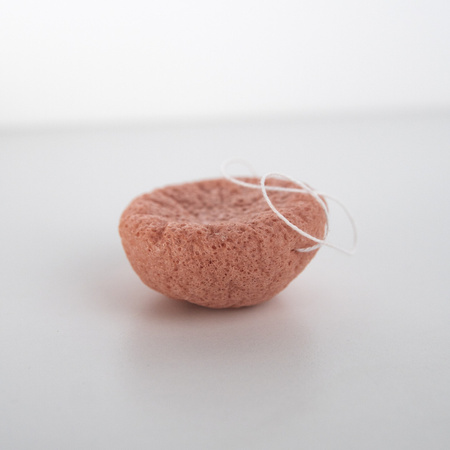Add products by adding codes
Natural konjac sponge for face cleansing Mohani - with pink clay
- Domyślny opis krótki
Natural konjac sponge for face cleansing Mohani- with pink clay
All the ingredients from which the sponge is made come from nature. It is 100% biodegradable, so after use, "Mother Nature" will take it in. She has donated her goods, which you can give back to her after use. Bury it in your garden as natural compost or place it at the bottom of a pot to hold moisture for your plant! Treat the use of the sponge as a pleasant ritual in which you can feel an emotional connection with the nature that surrounds you.
Be Zero Waste!
The annual consumption of facial sponges made of non-composted artificial materials for one person is around 6 pieces. Every month, the world produces kilograms of lingering sponges that take a very long time to decompose.
Help protect the environment by replacing them with vegetable sponges, which are biodegradable. We use a similar amount of them every year, but they don't litter the environment, they belong there.
What does a plant sponge consist of?
A sponge is created from the root of the konjac plant, which grows wild in Asia. It has been used in Japanese medicine for hundreds of years for its health and nutritional properties. The plant hides a unique type of fibre - glucomannan. It is able to absorb 100 times more water than cereal fibre.The plant sponge is enriched with high quality pink clay, rich in minerals and elements such as silicon, aluminium, iron, calcium, magnesium and sodium.
For which skin types is a konjac sponge with pink clay suitable?
Sensitive, vascular and mature skin.
Pink clay firms and evens out skin tone by strengthening and sealing blood vessels. It is a mixture of white and red clay - very gentle and recommended for tired, sensitive and dehydrated skin. Washing the face with a Konjac sponge with pink clay helps to restore the skin's healthy appearance, softness, radiance and natural elasticity.
What makes a konjac sponge special?
- The Riviera Amorphophallus, or konjac, is used for cosmetic purposes for its softness, delicacy and yet deep cleansing action.
- The structure of the sponge does not affect the hydrolipid mantle of the skin.
- After soaking it increases its volume, becomes gel-like and pleasant to the touch.
- Helps restore the skin's natural pH.
- Its softness remains unchanged until the very end, unlike many materials used for face and body washing accessories.
- You can use it not only to wash, but also to massage your face. It exfoliates dead skin cells and cleanses deeply. It stimulates the skin, promotes its renewal, improves its elasticity and tone. It makes the complexion well cleansed, fresh and smooth.
- The sponge allows for a low consumption of cleansing products due to its structure, which foams very well and enhances the effect of their active ingredients. You can also use it alone.
When to replace a konjac sponge?
The sponge should be replaced every three months or so. Due to its natural origin, its structure changes with wear and tear and can begin to delaminate or crumble. These signs tell us it's time for a replacement.
INCI: : AMORPHOPHALLUS KONJAC ROOT EXTRACT (KONJAC MANNAN), AQUA, IILITE, KAOLIN.
How to use: : Soak and gently squeeze a konjac sponge. Gently massage your face in circular motions. Can also be used on the delicate eye area. After use, rinse, tap off excess water (do not wring!) and dry naturally in a well-ventilated place.
Always use after soaking (never dry).
To disinfect, every few weeks place konjac in boiling water for 2 minutes.

